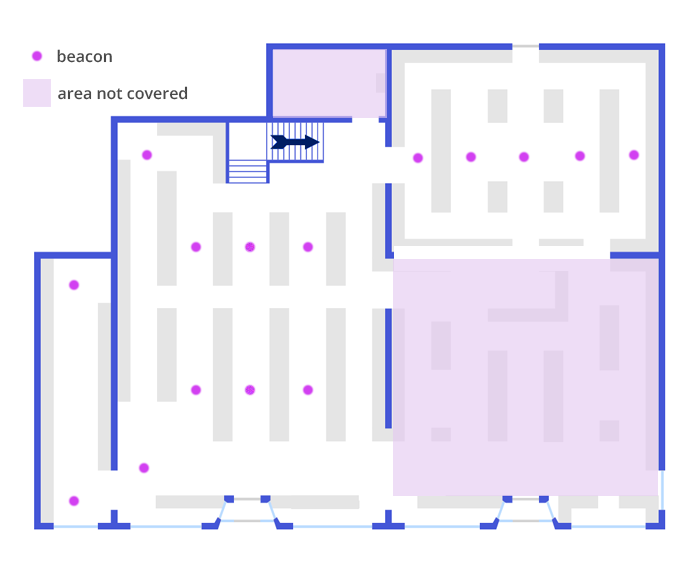To make retail trade more effective, owners wished for centuries to understand what the clients want and what they see when they enter the shop.
A lot was written and done on increasing the attractiveness of the premises and putting the goods in a particular fashion. Both owners and assistants were trying to develop their designer skills, good eye for clients, and intuition.
It is at present, that the development of AI and Machine Learning made it possible for good analytics and statistical data to come to help when pure talent is not enough.
Indoor analytics, as a part of AI, tells more about customers’ behavior: where they go at stores, what they see and what remains a blind spot, how much time they spend choosing the goods, and what emotions they experience.
Indoor Analytics provides information on visitor numbers, the areas they visit, and their length of stay. An indoor map built on the data may depict customer flows and a heat map will provide insights into where they spend the most time.
In this way, it is possible to identify spots within the premises that do not receive enough attention or that simply lie away from the conventional visiting route and optimize the layout accordingly. Apart from the evident benefit of placing the goods and promotions along the main route, this solution can help optimize human resources planning by analyzing customer numbers in different zones and at different times. Besides, visiting time tracking can give valuable insights into human behavior and the decision-making process and predict whether the pop-in visitor has the potential to become a loyal client.
There are three main approaches to obtaining the necessary data.
Wi-Fi networks

Customers’ smartphones provide the signals needed to track where people go in closed spaces. All you need is to record this information is the right radio sensor technology like a WiFi infrastructure and a couple of WiFi access points. Of course, each customer has the option to refrain from Indoor Analytics by switching off the WiFi feature on their phone while they are in the store. However, in most cases, customers themselves bring the main tool for using this type of customer flow study with them.
Beacons

Bluetooth beacons are tiny radio transmitters that send out signals in a radius of 10–30 meters in interior spaces. They have a number of obvious benefits: they are cheap, easy to install, determine positions accurately up to 1 meter, and are supported by many operating systems and devices. Besides, beacons can be used for both client-based and server-based applications. For example, they enable indoor navigation for airline passengers using the app — cross-platform and with an accuracy of up to 1 meter. The server-based beacon tracking of persons or goods is only possible with third-party components (e.g. Infsoft Locator Node, Cisco, Aruba). Beacons (the most common types are the iBeacon and Eddystone) are the best choice for projects that demand high accuracy and want to include Apple devices.
Security Cameras
Existing security cameras have all the required information for further processing. All we need is to get the videos from cameras, visualize the processed images in a 2D top-down view, and calculate the statistics. The advantages of this method are quite obvious: it is cost-efficient because it does not require any additional hardware, and it is customers-independent so that you don’t have to rely on smartphones which potentially increases the accuracy of human flow metering covering the groups of customers who do not use — or are unwilling to use the store’s WiFi.
On top of this, information from cameras can provide insights into the demographic characteristics of the customers as well as their emotions during shopping and their reactions to changes in the store layout.
One of the cornerstones of Indoor Analytics is a special anonymization process that guarantees that the recorded information cannot be related to individuals in any way. All information is immediately anonymized and encrypted on a secure, on-site server in full compliance with personal data protection laws. Therefore, systems do not have access to personal information, so the customer’s right to privacy is not infringed. All solutions take care to anonymize and record customer flows in the store and then use big data applications to provide informative analyses that can be used in management decisions.
Whichever approach you choose, it will soon transform your store into a better place for customers and give you the satisfaction of finally knowing what they want.